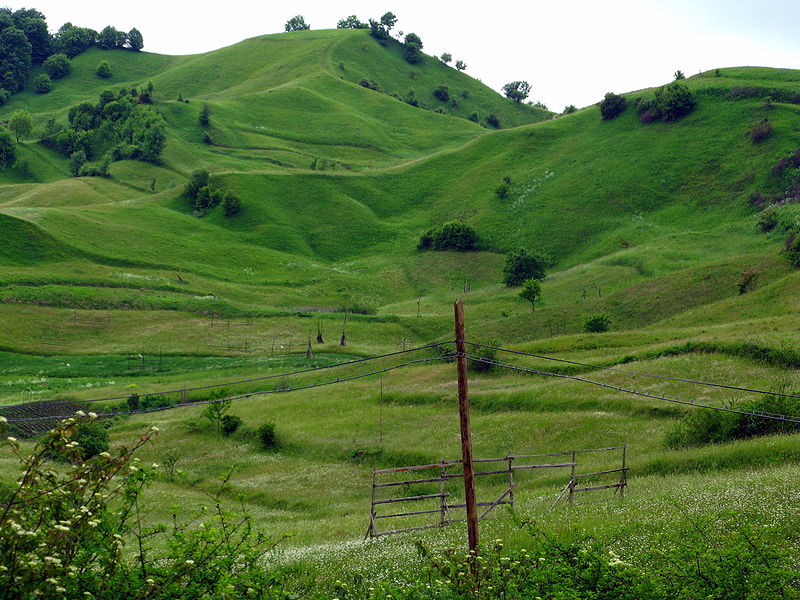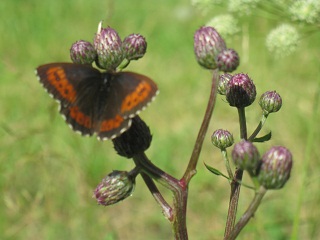
Written by: Paula Dragomir, Eco Ruralis Intern
Cooperatives used to be called CAP (Cooperativa Agricola de Productie – Agricultural Cooperative for Production) during the communist period in Romania. The beginning of the socialist transformation of agriculture in this country was decided in 1949 in relation to the Soviet kolkhoz (collective farms) in the neighboring USSR. The collectivization was slow at first, but in 1957 the process accelerated until its end in 1962, when approximately 93% of Romanian agricultural land was involved in collective structures. The agricultural holdings were confiscated and farmers were forced to give away a lot of goods related to farm production including animals and crops. This communist system destroyed many farms which resulted in vast poverty in rural areas. As a result, Romanians have a negative perception of agricultural cooperatives since.
Nowadays, cooperatives can be a very useful and efficient way of organizing peasants’ production from farm to fork in western countries. Cooperatives can give farmers the opportunity to develop their economic revenues and income, and to use the collective power to increase prosperity among members, their families and their communities. This type of organization can be classified based on the economic activities possible such as cooperatives of: service (maintaining or fixing tools and livestock facilities, help in specialized tasks, specialized transport, etc.), purchase/transaction, processing agricultural products, manufacturing/small agricultural industry cooperative, operating and managing cooperative (agricultural land, livestock head count), or cooperative for funding, mutual assistance and agricultural insurance. Cooperatives can also be classified based on the Tier system: first-tier cooperatives (worker, producer, purchasing or consumer cooperatives), second-tier cooperatives (group of cooperatives with a common purpose) and third-tier cooperatives (e.g. federated organization). Several successful initiatives have existed in Romania for several years and this progress is encouraging for the future development of agriculture in this country. Some of the representative examples also give us a better understanding of the direction towards which the farmers’ cooperation goes.
One of the oldest first-tier cooperatives called CAI (Combinatul Agroindustrial Curtici) was established in 1991 (based on the former communist cooperative) and is located in Curtici, Arad County. Today over 2500 peasant members have put together around 5000 ha, which contribute to its economic activities including: integrated crop and livestock production, meat and milk processing, and marketing of the end products (e.g. cheese). CAI also owns a network of 29 shops where they sell their products (dairy products, beef and pork meat and bread). The turnover is around 10 million euros per year and the specialized employees earn wages like in Western Europe. Moreover, due to this extremely profitable cooperative for peasant farmers, the land is no longer sold in Curtici, but is leased for an interesting flexible profit-share: 1.5 tons of cereals per ha or for example 750 kg of cereals and 300 kg of bread. CAI is a striking example of the cooperation between Romanian peasant farmers, which seem powerless regarding the decisions taken concerning the management of their land within this cooperative. The downside is that CAI is a very industrial cooperative using intensive farming, but this is what the members have accepted by joining CAI.
In a similar vein, one of the oldest first-tier cooperatives for milk producers, TimLactAgro, was established in Timis County in 2009 and today includes 27 members. For now, they are only big farmers, but the cooperative highlighted the need to also have peasant farmers as members. The objectives are to collect and sell the milk, and to supply the members with inputs such as grains for animals. Each month the cooperative delivers 740.000 liters of milk to processors. After receiving European funds, it was decided that they should use the money to organize their own milk collection center and to have their own milk factory.
More recently, new first-tier agricultural cooperatives have been established in Cluj County. One the one hand, Somes-Aries cooperative, created in 2011, currently includes 64 peasant members that produce in total 40.000 liters of milk per day. The milk produced is mainly delivered to the Dutch dairy cooperative FrislandCampina (which holds an almost monopoly over milk processing from the Transylvanian region, now owning traditional regional brands such as Napolact), and the rest is given to other small processors. The main purpose of the cooperative is to manage the production and the inputs together, which results in a business of around 6 million euros per year. On the other hand, Lunca Somesului Mic cooperative, created in 2013, supports the local traditional vegetable producers (currently 16 peasant farmers) in order for them to develop their production potential and consequently their revenues from agricultural activities. The creativity and the potential of these examples are highlighted by their innovative approach towards farmers’ cooperation. Currently, the representatives of Somes-Aries and TimLactAgro cooperatives are talking about taking over a big factory where they could process the milk produced by the cooperatives’ members, and also about building a slaughterhouse. The development of Romanian cooperatives is appealing and it reveals that this concept can be further integrated in the local agriculture.
Nonetheless, a couple of European cooperatives are leaving their mark in Romania, such as the French second-tier cooperative CAVAC. In late 2014, they became partners of a newly created Romanian cooperative named Bucovina. It has 12 members with large farms in Suceava County, together owning approximatively 6000 ha. Bucovina’s first goal is to build a big silo with European funds, in order to store cereals in good condition. For 2015, the French cooperative wants to purchase 30.000 tons of wheat and soybean produced by Bucovina’s members. The capacity to process agricultural goods in Romania is quite low compared to its production capacity. Therefore it appears clear that many foreign second-tier / third-tier cooperatives and private investors take advantage of the current under-developed agriculture in order to serve their own interests (e.g. importing cheap Romanian cereals).
All in all, even though the former cooperatives from the communist period have left a bad taste in farmers’ mouths, it appears that this type of organization has great potential for the future of Romanian agriculture. Moreover, cooperatives now have been given priority in receiving European non-refundable agricultural funds. Consequently, since only 1% of Romanian farmers belong to any agricultural association at the moment, more of them should become food cooperative members in order to benefit in the coming years from the funds allocated through the National Plan for Rural Development 2014-2020. This could also open up channels through which peasants would better assert their control and vision over agricultural production. Nevertheless, a new question arises: to what extent will peasant farmers remain in the center of these collaborative models, provided that, besides their will, the EU and the national funding criteria have the power to decide the future of peasant farming in Romania?
Other current examples
Cooperativa Albina Melifera Bucuresti
Cooperativa Agricola COMPOSTAR Nanesti
Cooperativa Agricola Prietenii Albinelor Ploiesti
Cooperativa Agricola VLASCA 2008
Cooperativa Agricola Legume de Vidra
Braicoop Cooperativa Agricola Braila




